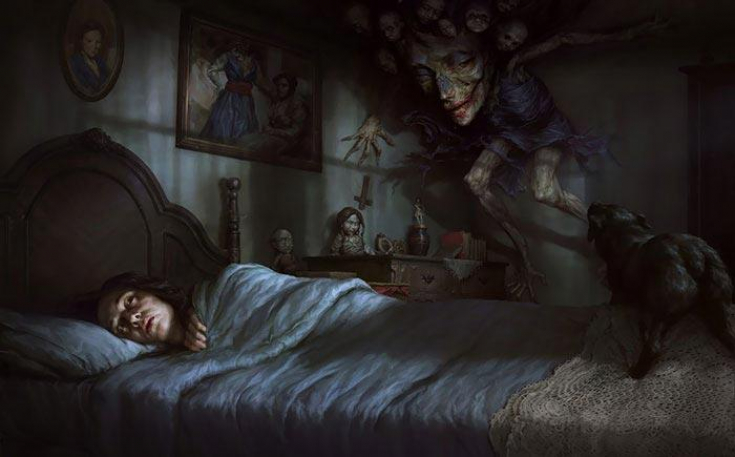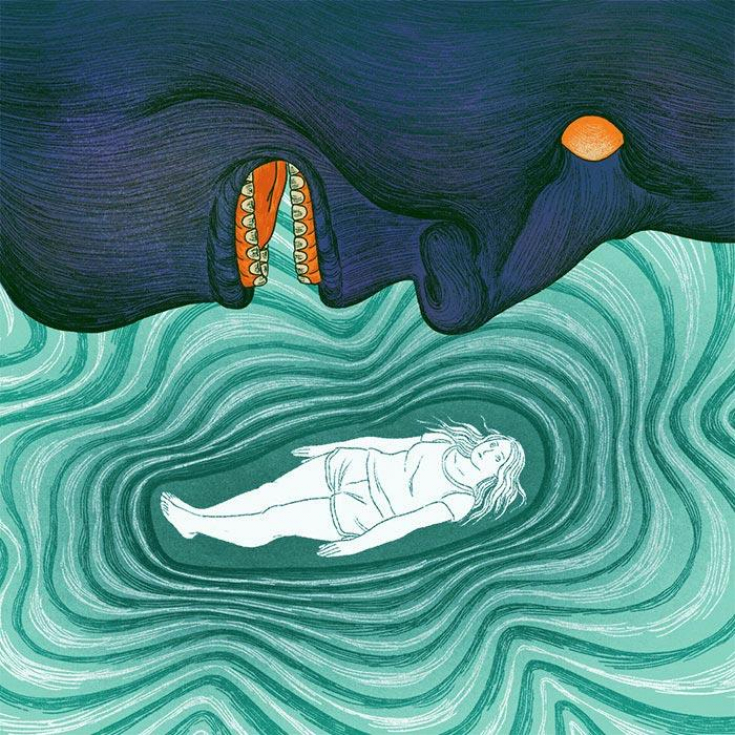Nightmares – these are physiological disorders associated with various stress or a problem that sits deep in the subconscious. Most importantly, feel free to start solving this situation and talk about your nightmares. Resolving this problem can help you improve your life significantly.
How often do you have nightmares, what is their content? Why do we have scary dreams? The editors estet-portal.com found answers to such difficult questions.
- What is a nightmare and how often do we see it
- The difference between normal and recurring nightmares
- How to stop nightmares in 7 steps
What is a nightmare and how often do we see it
Nightmares are defined as dreams that evoke intense feelings of fear, horror, distress, or anxiety. They feel more alive and intense than bad dreams. Nightmares often differ from dreams in that they cause the sleeper to wake up and experience intense sensations upon awakening. People waking up from a nightmare are likely to remember the details of it.
During REM sleep, brain waves exhibit activity very similar to wakefulness. The brain draws energy characteristic of wakefulness. With rapid eye movement, the muscles of the body are in a state of paralysis. This temporary paralysis is a good thing, during REM sleep the brain is still firing commands in the motor cortex while the person is moving through the dream world.
Subscribe to our page on Instagram!

Nightmares usually appear in the second half of sleep. There are speculations as to why we dream, ranging from subconscious thought control, to the categorization of memories and learned information, to purely random chemical cues. There is also not much information about why dreams sometimes turn out to be night terrors. It is believed that some daytime situations can have a significant impact on sleep.
Subscribe to our page on Facebook!
Statistics show that 50% of children aged 3 to 6 may have nightmares that affect their sleep, and more than 80% of children aged 7 to 9 often have bad dreams.
85% of adults say they have had nightmares at least once in the past year, 8-29% have monthly nightmares and 2-6% report weekly nightmares. Elderly people are 20-50% less likely to have nightmares than young people.
The difference between regular and recurring nightmares
Essence of Normal Nightmares – painful irregular dreams. Having a nightmare every three months falls on a spectrum that can be called "normal", as each nightmare presents a different content than the previous one.
Recurring nightmares occur when a person cannot recognize a conflict that exists in real life (post-traumatic stress symptoms or difficulty accepting the characteristics of oneself, certain situations). This happens on an unconscious level, manifestations are expressed only through painful nightmares, which are most often found with such content and meaning:
Harassment: the difficulty of accepting a part of ourselves that we unconsciously find dark or undesirable.

Extreme speed: associated with a feeling of lack of control.
Falls: expresses the fear of feeling abandoned or unsupported.
Exam: a nightmare associated with fate - unpreparedness, being late, lack of confidence in a certain situation with which there is a possibility of encountering in the present or near future.
Nudity: Usually people dream of being naked in public without the knowledge of others. This is due to insecurity in some aspect of life, a feeling of suffocation or a lack of ability.
Paralysis: is associated with feeling stuck, lacking the right goals, and difficulty in expressing emotions.

Mutilations: nightmares associated with the loss of teeth or body parts - talking about a situation in life that has been ignored or abused.
Being trapped: is associated with repressed or blocked aspects of life.
Drowning: is associated with a flood of emotions that are difficult to express or impossible to recognize.
refers to an aspect of childhood or a sensitive element of the personality that needs attention. While
recurring nighttimenightmares are uncomfortable and sometimes fearful, it really needs to be seen as a positive and valuable way through which the unconscious sends messages about previously ignored elements and the need to address them. The ideal is that the conflict with oneself that appears in the
recurringnightmare works its way to a solution. If this happens, it can be said that the anxiety has been eliminated, and terrible dreams will no longer disturb . How to Stop Nightmares in 7 Steps
If you wake up from a nightmare with a pounding heart and the belief that everything that just happened (car crash, tornado, flood) in your dream was actually real, take some time to anchor yourself in reality, in a state wakefulness. Navigate with extra care - look around, feel the blankets and pillows, and most importantly, remind yourself that you are safe.
2. Write about it
Recovering from a terrible dream, write down your
nightmare dream. You don't need to write a deep analysis - just write down what happened. Record yourself on a tape recorder describing your dream, or draw it if you're more visually oriented. And then think about it in the morning or throughout the day. Think of the dream objectively and symbolically, as if it were something to be deciphered or a poem to be interpreted, don't cling to the images so literally.
3. Talk about your nightmares with someone you trustUnderstanding your
night terrorsdoesn't have to be an independent affair. Discussing them with a friend, therapist, or similar support group can give you insights that you wouldn't have on your own. Talking about your disturbing dreams with other people can also give you some objectivity about something that can be really overwhelming for yourself. Things we are ashamed of or afraid of often seem less meaningful to us when we say them out loud to someone we trust.

Spend some time analyzing the nightmare yourself or share it with others. So you can draw conclusions and assumptions about the source that causes the nightmare. The next step is to figure out what to do about the problem, which is found on the basis of
nightmares. It is worth thinking about how you can use your sense of free will in this world.
5. Ask to stop the nightmaresYou may feel silly, but if you've had a lot of stressful nightmares, you should try: ask yourself, your brain, your unconscious not to show you nightmares in your sleep.
6. Seek professional help if necessaryNightmares are a very common part of PTSD. If negative feelings are exacerbated,
night terrors affect mental health – you should seek professional help in solving the problem.
7. Talk to your doctor about your medicationsThere is one final fact that has nothing to do with your inner consciousness – the source of nightmares may not be a life problem, but a specific medicine. Some people who have recently started taking antidepressants report nightmares and especially vivid dreams. Other medications associated with nightmares include beta-blockers, some sedatives, and sleeping pills. In this case, it is worth consulting with your doctor about changing medications or another dosage of the current drug.
In the realm of dreams and
night terrors, there are more mysteries than facts. This is a difficult area of neuroscience and psychology to study, because everyone has their own unique dream world, which is subjective in nature and difficult to accurately study. We ourselves must learn to understand our dreams as signals of unmet needs or unresolved problems. No one will understand us better than ourselves.
More useful information on our channel in






Add a comment